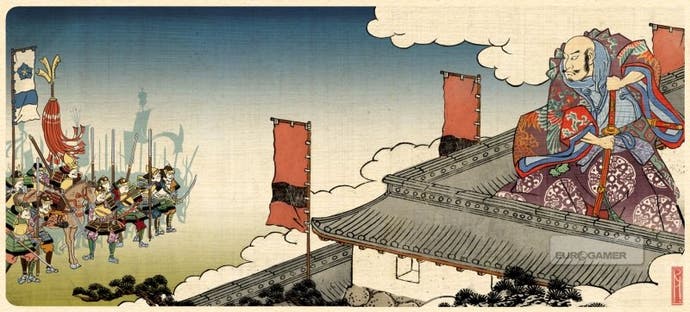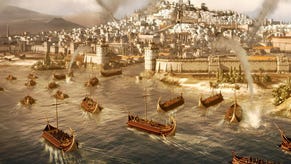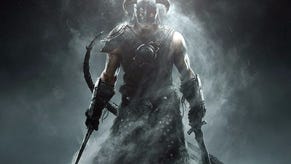Shogun 2: Total War
Returning Japanese.
Moonlight bathes the rolling hills and forested glades, glinting off our serried rows of troops. Up ahead, a white castle gleams from the top of a steep hill, torches flickering distantly under the sloping eaves of its distinctive roof, a pale sentinel watching over the valley; our objective.
The wind whips across the battlefield, rustling trees, sweeping through the grass and carrying the distinctive red maple leaves of a Japanese autumn on its gusts. Between our troops and that castle lie our foes, ranged in their thousands to meet us.
Dimly glowing paper lanterns, carried by one man in each unit, swing in the breeze, and as we begin to push our forces forward, rain begins to fall on the battlefield. The black, lacquered armour of our troops glistens wetly under the downpour as pikemen advance steadily up the hill.
Then, from the forested glade to their right, a burst of light - a volley of flaming arrows, launched in ambush, arcs through the night sky and lands among our troops. There is an unmistakable hiss as the lethal, flaming darts find wet ground, wet armour and wet flesh, and our pikemen fall in disarray, weakened; easy prey for the cavalry who now sweep thunderously across the slick grass to finish them off, swords rising and falling in dancing curves.
"Oops," says the chap controlling the demo, rubbing his chin somewhat sheepishly, and jolting me back - momentarily - from a rain-lashed autumn night in feudal Japan to a gloriously sunny summer's day in the south of England.

It's in these unlikely environs that The Creative Assembly is returning to the scene of its first breakout hit, Shogun: Total War. In the 10 years (almost to the day) which have elapsed since Shogun appeared, the Total War series has grown upwards and outwards, embracing ever-larger conflicts spanning ever-larger geographic regions. For its next outing, however, the franchise returns to its roots, the feudal Japan of the Warring States Era.
The affection for the era pours from the game's creative leads. "It's one of my favourite periods, one of my favourite cultures," announces creative director Mike Simpson. "It's a rich mine that we didn't really have the technology to explore fully last time around."
"It's just the perfect time to set a Total War game," says the Total War franchise's lead designer, James Russell, picking up the theme with gusto. "It's the most turbulent period of Japanese history - central authority has completely broken down, so you have all these rival, powerful warlords, the daimyo, vying for control."
"Because of the breakdown of central authority, anything could happen. It's an era of completely decentralised society, where the clan and the local military power is all-important. That makes it a brilliant setting for Total War, where you rewrite your own history - because anything could have happened.
"It's also a period where you've got interesting changes happening, because you've got the first arrival of the Europeans, the introduction of very early firearms to Japanese warfare... That creates some really interesting dilemmas for the player."









